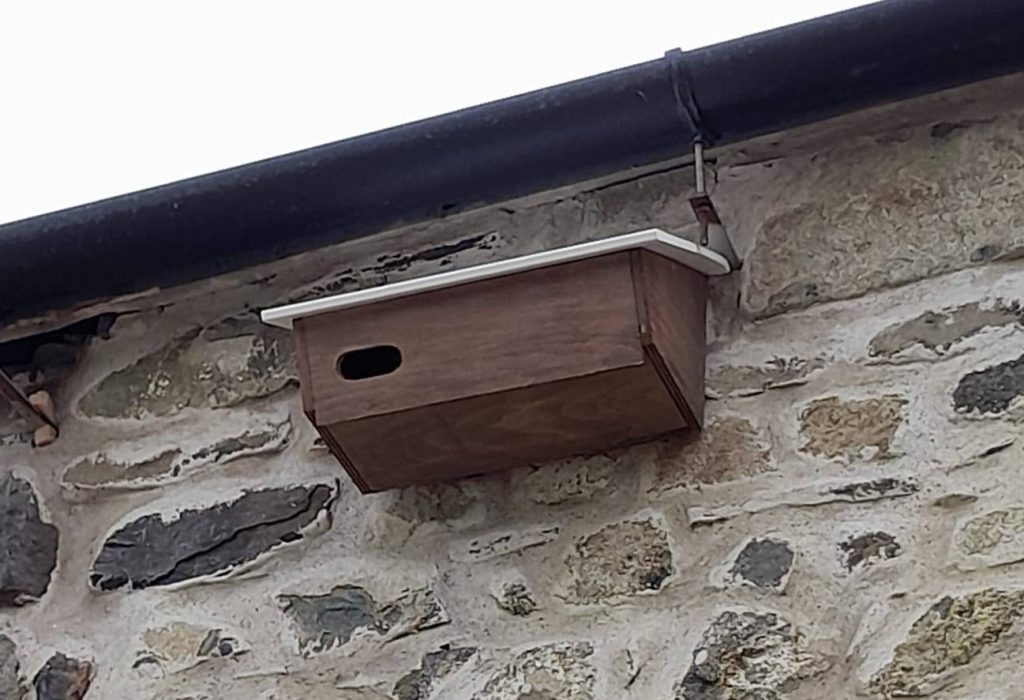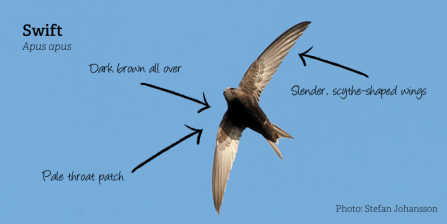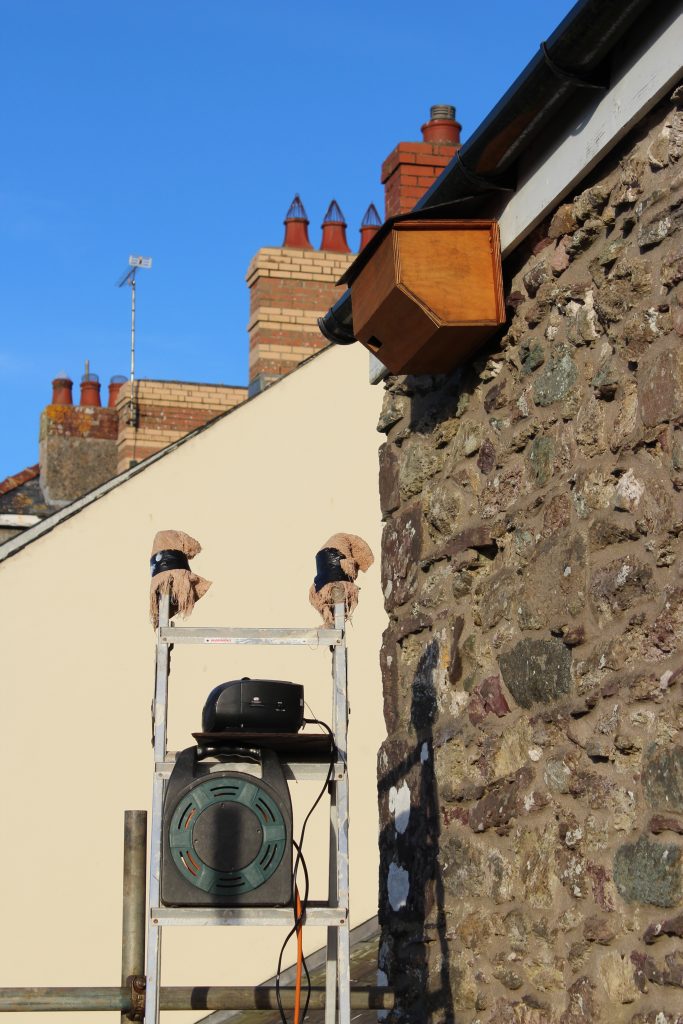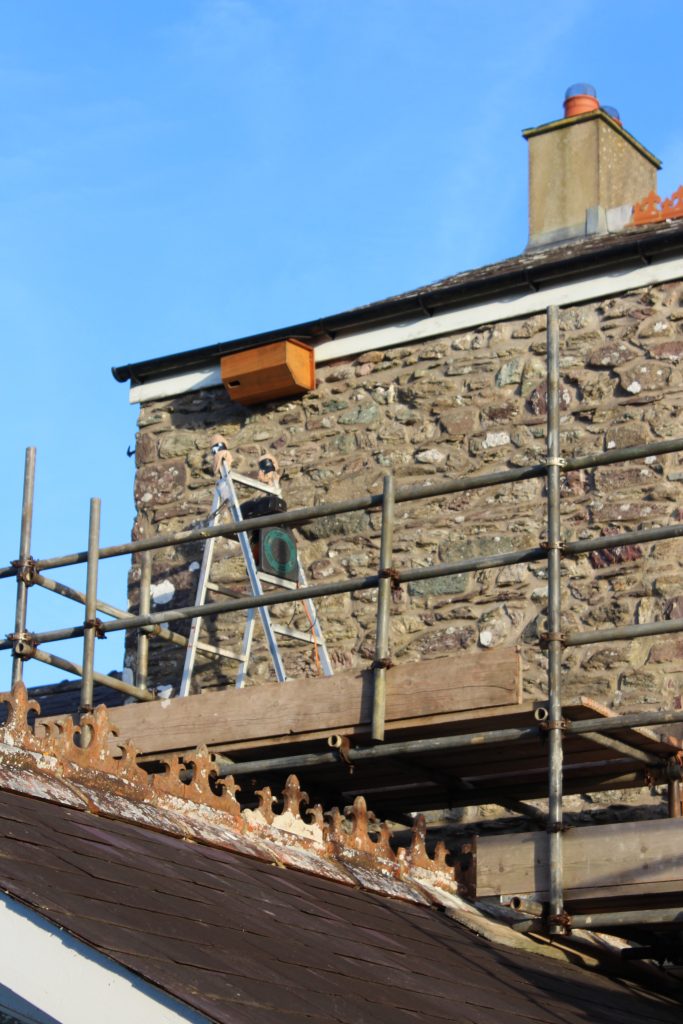
Like many tourists, Swifts love holidaying in the St Davids Peninsula every summer and are historically a regular sight bringing a real buzz of joy as they swoop over our skies around the end of April.
Sadly though, Swifts are now officially on the UK Red List with over half of the UK population (-58%) disappearing from our skies in the last 25 years!
Having been approached by a concerned resident, we have put together a project to help protect Swift habitats across the peninsula and ensure this graceful and fascinating bird keeps coming back to our skies every year. Leading this project for EcoDewi is Dan Wright. Scroll to the bottom to keep on track of this projects latest news.
THE BIGGEST THREATS…
A. Loss of habitat – as buildings become modernised “nooks and crannies” and old eaves are sealed up, especially in old historic buildings and farm outbuildings. Swifts return to the same nesting place every year and if a nest area is destroyed they will often just give up breeding.
B. Lack of insects – as with many creatures, the plummeting number of insects is of real concern. Swifts catch flying insects and airborne spiders, eating them mid-flight or delivering a ball of food to their brood.
THE GOOD NEWS…
There is plenty we can do but we must act quickly. Here are our TOP 3 ways you can help:
1. IDENTIFY & RECORD Swift nests and sitings. Everyone can help by logging where Swifts are currently across the peninsula. Click HERE for more info.
2. INSTALL NEST BOXES. There are a massive range of different nesting boxes available. If you are having building work done, you can install Swift bricks made from a range of material and for different aesthetic looks. Alternatively you can restrospectively install nest boxes on walls or under eaves. Again, there is a massive range to buy or even download a simple guide to making your own. More info HERE.

3. CREATE HABITAT FOR INSECTS. Once our insects numbers plummet, a whole heap of creatures will start becoming endangered and eventually one of them will be us. So ensuring insect numbers increase is vital. Why not create a Mini Meadow to support insects or create other habitats for insects such as bug hotels (bought or homemade), log or stick piles, or even add a pond or water feature to your garden or land. It doesn’t have to be massive, every bit helps. More ideas HERE.

Quick Swift facts:
- Scientific name: Apus Apus – meanining “no foot, no foot”
- Travel from Africa every year, approx 20,000 km, to Wales
- Normally arrive in April, breed here and then return to south of the Sahara in late August
- Pairs bond for life and have been known to live up to 21 years!
- Swifts sleep, eat, bathe and even mate on the wing, rarely touching the ground
- Fastest bird in level flight
- They rarely defecate in the nest & eat their chick’s droppings!
- They are super discreet so you’ll hardly know they are nesting over your head
- Birds and nests are protected by The Wildlife and Countryside Act 1981
What to know even more about this amazing bird? Swift, Swallow or House Martin? How can you tell the difference? CLICK HERE.
Here’s how you can get more involved with this project:
- Follow the advice above and help record sightings and install a nest box
- Email us at hello@ecodewi.org.uk to offer your help, support the project or ask questions
- If you happen to be in St Davids, Dan is happy if you pop into Goat Street Gallery for a ‘Swift’ chat! Note the gallery is closed Sundays and Mondays.
Keep reading below for latest updates on this project
We’re really pleased that Dan Wright, who is leading our Save Our Swifts project, has already installed his own Swift box at the back of Goat Street Gallery.
Dan installed the box the other day and has taken the extra recommended state of purchasing a CD of Swift calls. This may sound quite bizarre but as Swifts are creatures of habitat, enticing them into new habitats can be difficult so mimicking other Swifts is one way.
Dan added, “I had heard about the rather underhand trick of playing a CD of Swift calls as close to the Swift box as possible at this time of year to attract the juvenile swifts to nest in your box. I bought a CD and thought I would give it a go. The only way I could think of getting the CD player as close to the box as possible was to place it on a step ladder on the scaffolding below the box.


We waited until we spotted a small group of three Swifts, way in the distance beyond the Cathedral about 1/2 a mile away. I pressed play on the machine and watched amazed as the Swifts turned immediately and shot over to our house as only Swifts can do. It was fantastic and a little scary as I was trying to get off the scaffolding to leave the Swifts to discover the box on their own! We played the CD the following morning and are going to continue to play the calls in short blasts over the next month. I will keep you updated as to how we get on. This has been a very exciting start to Our Swift project and we are looking forward to keeping anyone updated.”
Dan is happy to share his experiences and ideas if you want to pop into Goat Street Gallery for a chat. If you are interested in how you can play Swift calls, check out more info HERE.
We do advise that you take great care when using electrical items outdoors, ensuring they are safe and suitable for the environment, as well as taking care when working at heights as individuals.